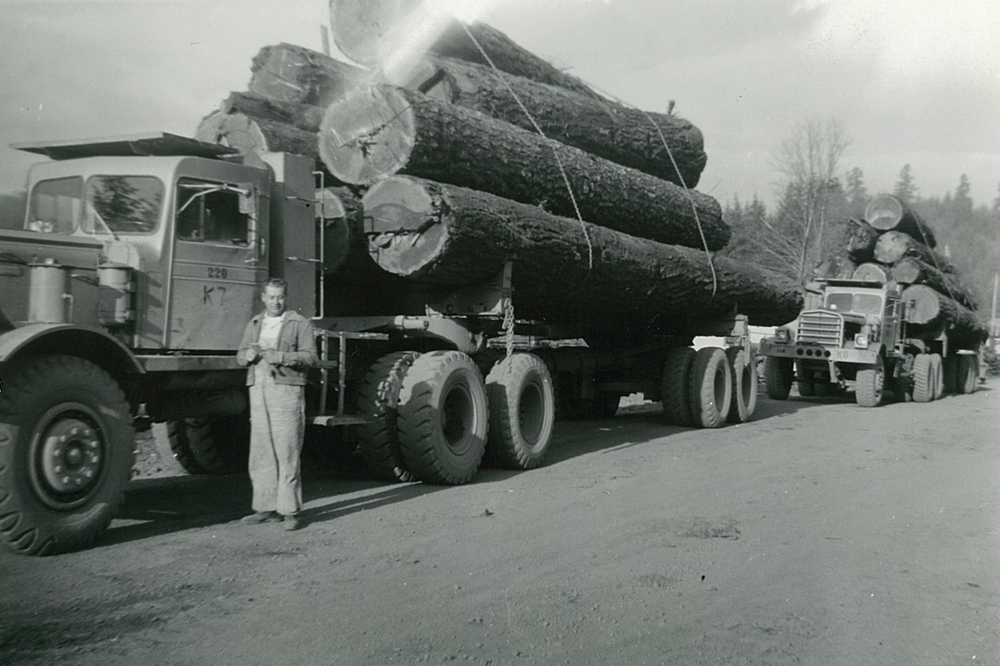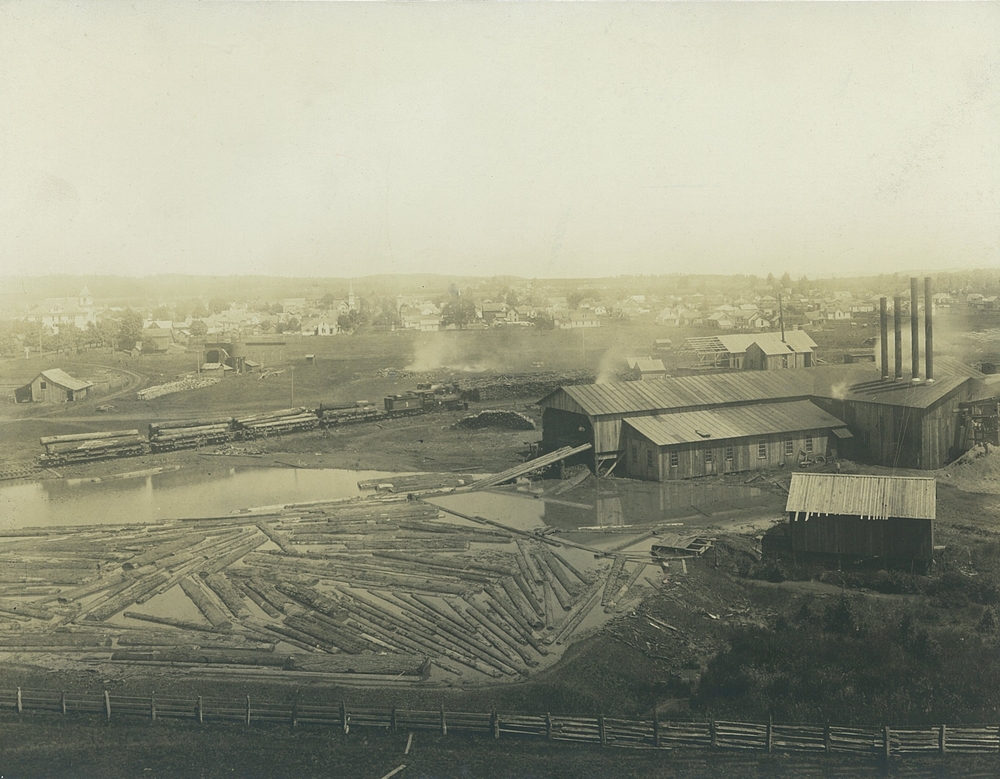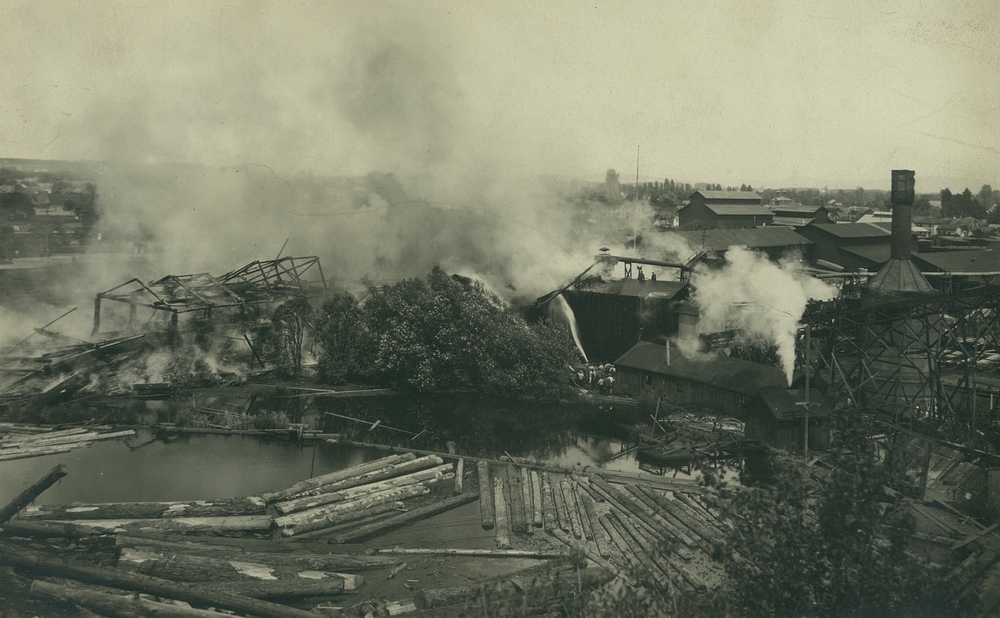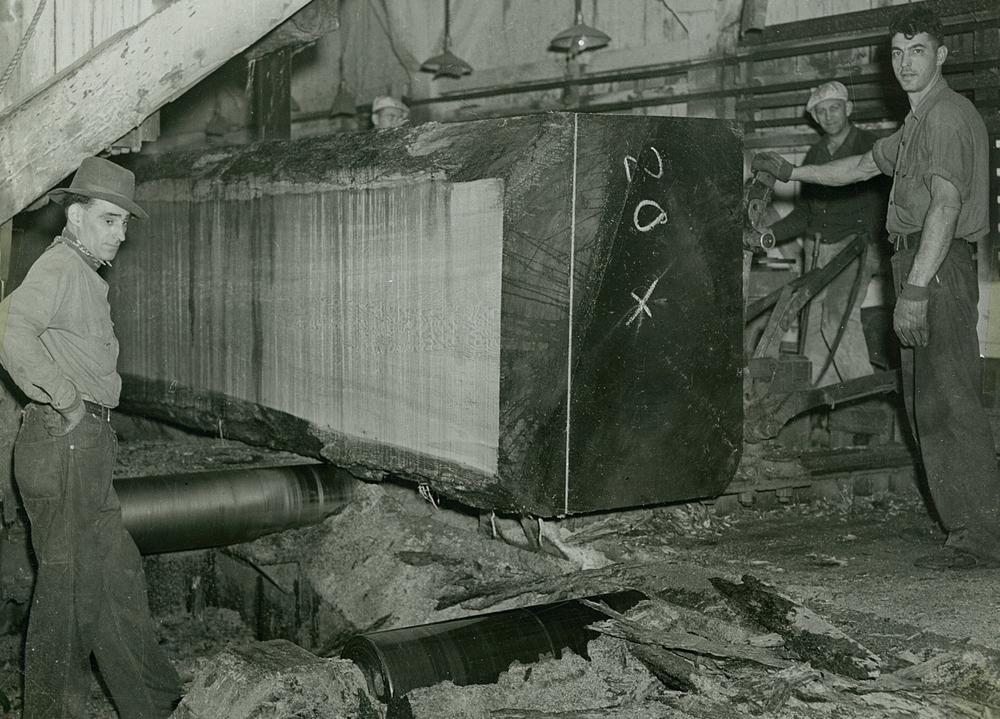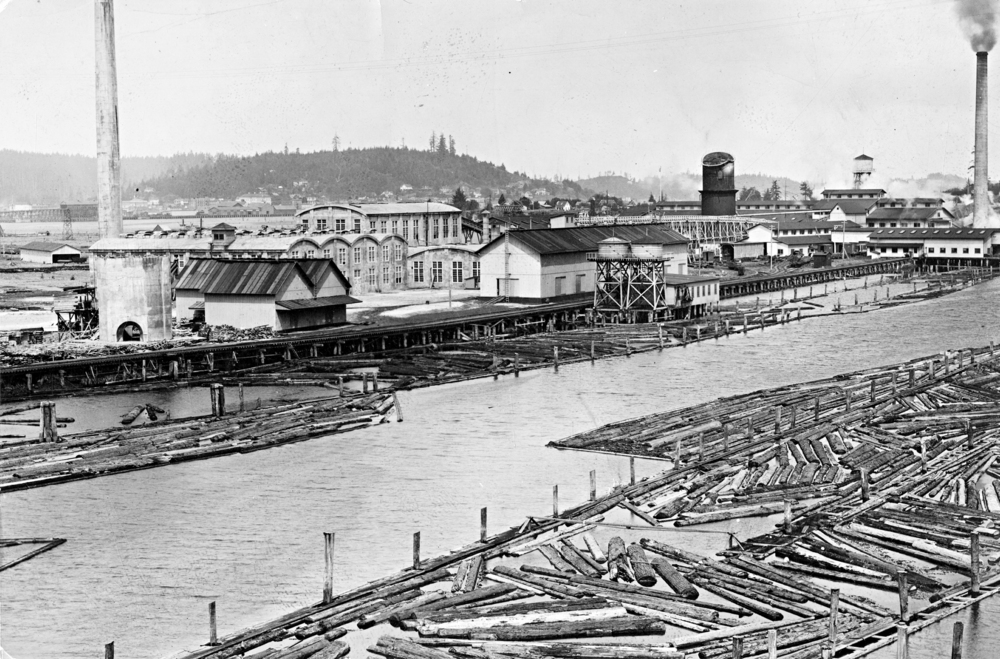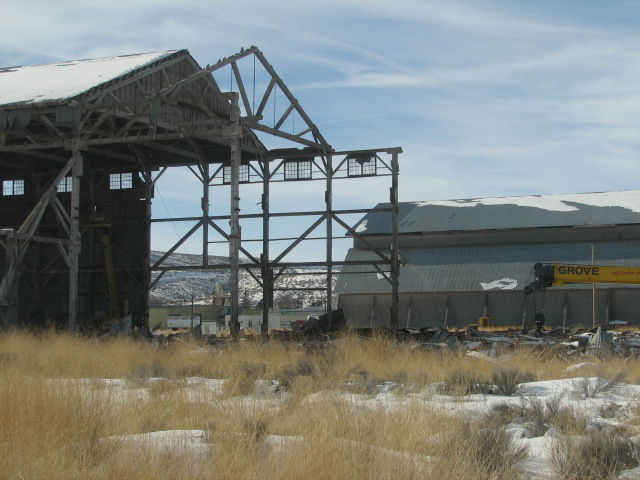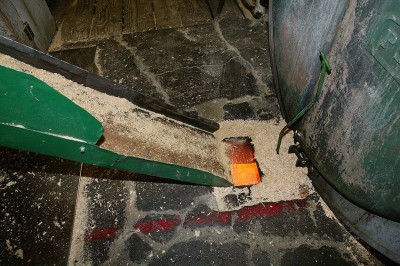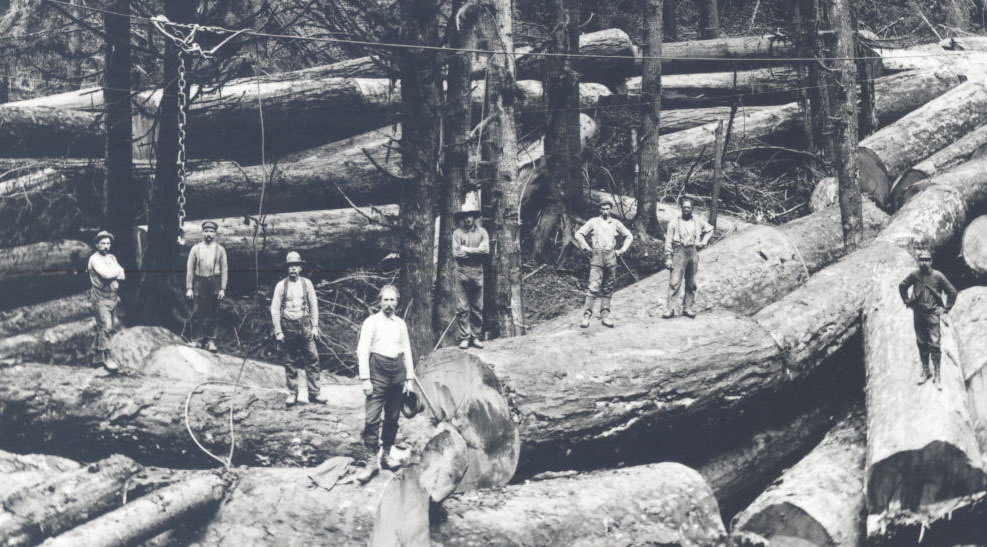At its peak in the 1990s, Willamette Industries owned or managed 1.7 million acres of timberland and operated more than a hundred wood products manufacturing facilities in twenty-three states and in Ireland, France, and Mexico. Its origins can be traced to Louis Gerlinger, who was born in Alsace, France, in 1853. In 1894, Gerlinger moved to Oregon, where he founded the Willamette Valley Lumber Company in 1906. Shortly thereafter, Gerlinger's son George took over the family's timber interests and quickly became a leader and spokesperson for the forest products industry in Oregon, serving on the Oregon State Board of Forestry for twenty-nine years.
A new challenge for the company came when World War I increased the demand for lumber to build airplanes and ships while the draft reduced the available work force. The Industrial Workers of the World (IWW) attempted to unionize the remaining workers and in the summer of 1917 called a general strike against the forest industry. To ensure supplies needed for the war effort, the federal government stepped in, creating a government-sponsored union, the Loyal Legion of Loggers and Lumbermen ("Four L's"). When peace came, the Loyal Legion continued at the suggestion of Gerlinger and others.
In the late 1920s, the Pacific Northwest clearly had more mill capacity than the market could sustain. Imaginative and efficient use of its resources enabled the Willamette Valley Lumber Company to keep two shifts, each working forty-eight hours a week as the Depression set in; its profits were negligible. The company introduced innovations such as using hemlock, previously considered a worthless tree, to manufacture a variety of products, selling leftover hemlock chips for papermaking, and burning the rest for power. Ironically, the Lumber Code of the National Industrial Recovery Act forced the company to cut to a single thirty-hours-a-week shift in 1933. Citing existing contracts that required continuing production, Gerlinger led an attempt to secure an exemption from the code. When his efforts failed, the company quickly announced the construction of a new mill to rehire laid-off workers.
In 1930, William Swindells, a civil engineer married to Gerlinger's daughter Irene, joined the company. As Swindells learned the industry, Gerlinger began purchasing timberland to meet the capacity of their mills. Concerns about the timber supply led Gerlinger and other members of the Board of Forestry in 1940 to promote the Oregon Conservation Act. In the New York Herald Tribune, Stewart Holbrook described the law as "an attempt by thoughtful lumbermen to control the irresponsible minority of their fellows of the old fashioned cut-out-and-get-out school. It is a practical law, based not on esthetic theory but on long experience."
Willamette Valley Lumber Company continued its growth, spurred by the demands of World War II. Gerlinger and Swindells joined with the Louis W. Hill family of Minnesota to incorporate the separate Willamette National Lumber Company in 1946. After Gerlinger's death in 1948, Swindells continued to buy interests in other Oregon timber companies and to develop the company's commitment to sustainable forestry. Output expanded to include plywood, veneer, particle board, paper, linerboard, and corrugated containers. The company also found expansion opportunities in the American South, where a second-growth crop of pine timber was emerging.
In 1957, Willamette National merged into Willamette Valley Lumber Company, initiating a process that eventually saw the consolidation of a number of companies to form Willamette Industries in 1967. Beginning in 1968, Willamette Industries' stock was publicly traded. During subsequent years, the company expanded with acquisitions in seventeen states. William Swindells retired in 1976. In 1984, William Swindells Jr. became chair of the board, president, and chief executive officer.
Even as changes in the management of the national forests and the protection of old-growth forests challenged the company, its accomplishments were recognized by Forbes magazine in 1992. In 1997, Willamette Industries CEO Steve Rogel resigned his position and became the CEO of Weyerhaeuser Company. In November 2000, Weyerhaeuser publicly announced its attempt at a hostile takeover of Willamette Industries. For fourteen months, the Willamette Industries board resisted until Weyerhaeuser gained the three seats necessary to change the balance of power on the board. The sale became official in March 2002.
-
Willamette Industries log trucks..
Willamette Industries log trucks.
-
Willamette Industries lumber mill.
Willamette Industries lumber mill.
-
Willamette Industries lumber mill.
-
Willamette Industries lumber mill, interior.
Willamette Industries lumber mill, interior.
-
![]()
Seth Forquer tests new lathe at million-dollar sheathing plant of Willamette Valley Lumber Comany, 1955.
Oregon Historical Society Research Library, Oregon Journal Collection, 013128
Related Entries
-
![Associated Oregon Industries]()
Associated Oregon Industries
Associated Oregon Industries (AOI), a private business and advocacy gro…
-
![C.A. Smith Lumber Company]()
C.A. Smith Lumber Company
Charles Axel Smith became, for a time, one of Oregon's most powerful lu…
-
Hines and the Edward Hines Lumber Company
In the mid-1920s, large sawmill owners in the United States found a new…
-
![Hull-Oakes Lumber Company and mill]()
Hull-Oakes Lumber Company and mill
The historic steam-powered sawmill complex of the Hull-Oakes Lumber Com…
-
![Industrial Workers of the World (IWW)]()
Industrial Workers of the World (IWW)
The Industrial Workers of the World (IWW or "Wobblies"), founded in 190…
-
![Oregon-American Lumber Company]()
Oregon-American Lumber Company
The Oregon-American Lumber Company (1917-1934) and its successors—the O…
-
![Timber Industry]()
Timber Industry
Since the 1880s, long before the mythical Paul Bunyan roamed the Northw…
Related Historical Records
Map This on the Oregon History WayFinder
The Oregon History Wayfinder is an interactive map that identifies significant places, people, and events in Oregon history.
Further Reading
Dunn, Catherine Baldwin. Making the Most of the Best: A History of Willamette Industries, Inc. Portland: Willamette Industries, 1994.
Robbins, William G. Oregon, This Storied Land. Portland: Oregon Historical Society Press, 2005.

